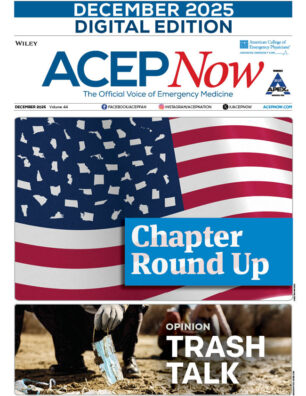Particularly in our home state, an increase in the number of Free Standing Emergency Centers (FSEC) continues to gain momentum and doesn’t show any sign of slowing down. Much of the increase can be credited to the passage of Texas House Bill 1357 in 2009, which paved the way for emergency physicians to practice privately outside of a hospital-based emergency department.
Prior to this bill, emergency physicians practicing in private practice (apart from the hospital) were essentially Urgent Care, ineligible to be compensated for facility fees, often limiting business availability for the expensive overhead of qualified staff personnel at the standard of hospital practices.
Other states might follow. Delaware recognizes true Free Standing Emergency Centers. Colorado, Oklahoma and Washington are pending approval. A true Free Standing Emergency Center is not affiliated with a hospital and does not use the hospital for resources other than direct admits. While we are seeing “Satellite FSECs,” these are hospital affiliated and do not require the same licensing that independent emergency centers need. Whether you call them Free Standing Emergency Departments or Free Standing Emergency Centers – and whether or not you agree with their concept – it doesn’t appear that they are going away. This may be a good thing. All licensed facilities are full service emergency centers that include these hospital standards:
- Staffed with qualified Emergency Physicians
- CT in the facility
- Ultrasound
- X-ray
- In-house lab for immediate results
- Trauma Room
- Ambulance access port
- Patient transfer agreement with admit privileges to nearest hospital
- EMTALA’s Intent – EMTALA applies to facilities receiving Medicare/Medicaid funds. The intent is for qualified medical professionals to provide a medical screening exam to determine an emergency medical condition. The intent of HB 1357 is that trained and experienced emergency physicians will follow this concept despite the absence of provisions to enforce this concept. (Sec 1301.155, prov. 1)
Free Standing Emergency Centers provide generally faster access to emergency care with a faster turnaround anywhere from 15-30 minutes patient-to-doctor time. Early markers of success of FSECs are a high consumer/customer/patient satisfaction. The emergency workforce may find higher autonomy working in FSECs as opposed to a corporate medical staffing model or the bureaucracy of a hospital-based emergency department. There could also be an opportunity to be financially vested in the FSECs; in fact most FSECs are owned by emergency physicians.
With the development and growth in the industry, Free Standing Emergency Centers have yet to communicate a clear definition to the academic emergency medicine associations. While some facilities claim to be an “Emergency Center,” upon inspection, what is revealed is a facility that just treats higher acuity care (Urgent Care), not true emergencies.
These facilities are usually not set up to manage patients needing CTs, ultrasounds, or higher acuity emergency care. In fact, most urgent cares are not staffed by board certified emergency physicians in contrast to FSECs. These issues were discussed at the ACEP Council Meeting in Denver last October (2012) when an FSEC resolution was introduced by the Texas Chapter of ACEP.
Those in the FSEC industry have a responsibility to create their own definition for recognition in the profession of emergency medicine. Those interested in FSECs have an opportunity to shape the future by joining the FSED section. A direct link to the online petition for the formation of an ACEP FSED section is at www.acep.org/Membership-top-banner/New-Section-Petitions/
Dr. Ybarra is an emergency physician and Chief Medical Officer at ConcilER in Harlingen, Texas. Ms. Garza is an owner/administrator at ConcilER.
Pages: 1 2 | Multi-Page




No Responses to “Standing Alone Is Becoming More Popular”